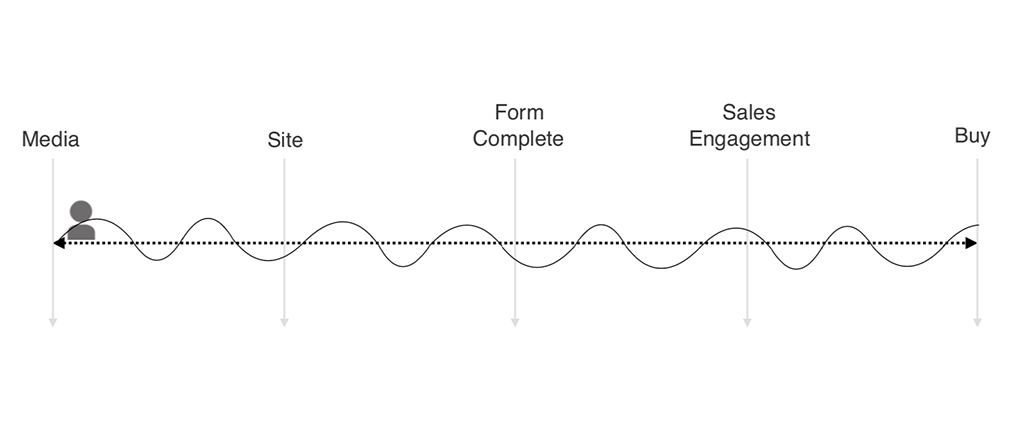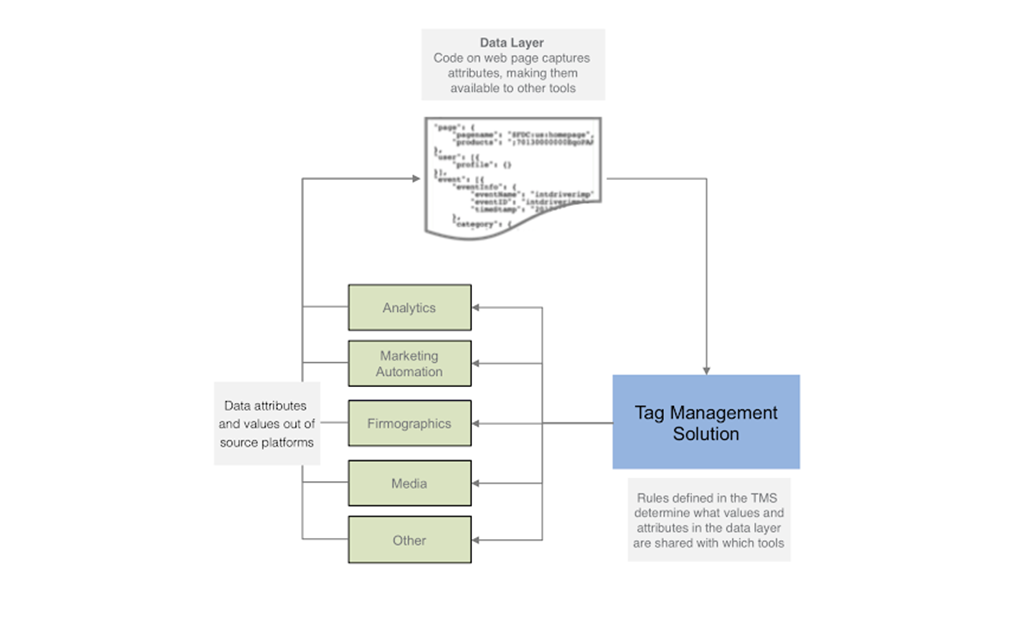How many different tools and technologies touch and collect data on your customers, from the time they’re an unknown prospect all the way to when they’re a regular shopper or user? When you consider your paid media, website CMS and analytics, marketing automation, CRM, social media, purchase transactions, and customer support, that number easily stretches into the dozens for enterprise companies.
The problem is all these different systems create data silos and multiple partial views of the customer. No team has the complete picture, and as a result, everyone makes their own conclusions based on incomplete information about the audience, marketing, sales, performance, and opportunity.
Western Digital summarizes the situation for their business: “We have all these departments, each using their own unique and isolated reporting solution, including Sprinklr, Eloqua, ExactTarget, Spredfast, Adobe, and others. We need a single, accurate and integrated platform and view.”
The names of the specific platforms and technologies may vary, but we’ve seen this pervasive problem across businesses large and small, B2B and B2C. They’re held back by data challenges – quality, consistency, availability, integration – from understanding their customers and what works, and then delivering the personalized experiences customers want.
That’s why we developed the Hero Digital CX_OS, or customer experience operating system. It’s a solution for unified data management, providing a single complete view of all your touchpoints, and enabling synchronized and personalized experiences across them.
Reporting and CX Benefits
The CX_OS, similar to a Customer Data Platform (CDP), is necessary to connect the dots between interactions across different platforms and provide unified reporting in an omnichannel world. By bringing together data from across your media efforts, website, marketing automation, CRM, and transactions, you can visualize the entire journey from awareness and conversion to up-sell and loyalty in a single place.

As a result, multi-channel, multi-touch attribution becomes much more realistic. Whereas before it would have required analysts logging into multiple systems, pulling the data, and centralizing it in a spreadsheet or other format, you can simply turn to the CX_OS. It further enables marketing to quantify its impact on sales and revenue – not just lead generation – and better understand ROI and cost per sale to drive spend and media mix optimization at a segment level.
However, while the CX_OS has a major impact on marketing reporting, it’s differentiated from a CDP (and gets its name) because of the way it can transform the customer experience. Not only does it give organizations a 360 degree view of a customer, but it also connects back to each individual system, so the centralized data can be used to orchestrate a more personalized and seamless experience for visitors and customers. It’s a two-way communication, with data flowing both in and out.
As you can imagine, the possibilities grow from there. Whether a person is interacting with your ad, on your website, in your store, or another one of your channels, they can have a personalized experience based on everything you already know about them, not just what’s siloed in a single system. Applications for CX_OS include:
- Targeting & personalization based on engagement history, customer value, transactions, demographics, and firmographics
- Offer management, recommendations, and optimization
- Shared segments / distribution of messaging and experiences across channels (email, DM, app, in-store, etc.)
- Reporting and data visualization
- Governance / GDPR compliance
Data Management Requirements
In order for the two-way communication to take place, there are three critical components to our CX_OS:
- Stores all data in a centralized place where it can be easily accessed,
- Maps the various customer IDs assigned by your systems to a single master ID, and
- Collects and serves up data to the right system at the right time to enable personalization
Let’s discuss each of these in turn.
Data Storage
As a foundation, all data must be managed in a centralized place. This approach minimizes duplication of data while collecting any and all data necessary for immediate or potential future use. Consider the alternative: copying data from one system and importing or integrating it into another for use. It can easily lead to the same data being replicated across five or six different systems, taxing your tools, your teams, and potentially even your budgets.
Exactly how and where that data is stored can vary. It’s often hosted in the cloud, but can also be hosted on-premise/private cloud or in a datacenter. A transitional option is to store it where most of your customer data is already stored, such as your existing CRM or Marketing Automation platform. However, we don’t consider these a long-term option as they typically lack the scalability, efficiency and flexibility for all the possible applications of the data, including ad hoc analysis and modeling/AI.
Customer ID Mapping
Next, the CX_OS must assign a master ID to each customer and prospect and map that ID to all the different customer IDs your systems have assigned them. While it may sound like a simple matching exercise, when you get to the volume of IDs most enterprises have today, it’s a staggering task. And what happens when a “new” prospect enters the system?
A customer that comes to the site on a different browser or device, or has cleared their cookies, will cause the ID chain to break – but only temporarily. She will be treated as a new visitor and be given new IDs for every browser per device. When she authenticates within those browsers using the same email address, the data will collapse to the original ID.
Data I/O
 The final component collects data attributes and values from a platform, as well as makes non-native data from other systems available to a specific platform. It comes in the form of code that sits directly on a page, writing data to storage and dynamically requesting data as needed, such as for real-time personalization on a webpage.
The final component collects data attributes and values from a platform, as well as makes non-native data from other systems available to a specific platform. It comes in the form of code that sits directly on a page, writing data to storage and dynamically requesting data as needed, such as for real-time personalization on a webpage.
This data layer is very efficient because data joins can be made and managed in the code, rather than custom 1:1 integrations between all your systems. Furthermore, it makes it much easier to replace or supplement platforms and data sources. You simply need to link the new system customer ID to the master ID, and nothing else will need to change in the setup of your existing systems.
Getting Started
The first step to enabling your CX_OS is developing an enterprise marketing measurement framework, with an emphasis on media, analytics, marketing automation, and CRM. This framework sets the stage for what’s critical and what’s nice to have as you then work to gain cross-functional input and outline requirements.
To learn more about the complete journey to your CX_OS, contact us to get started.








